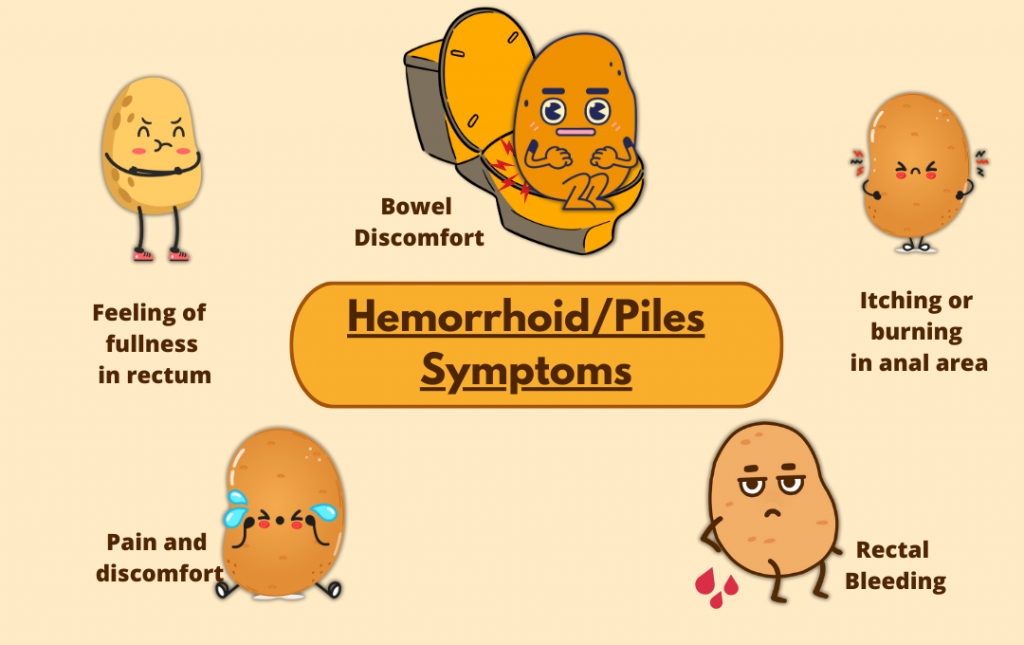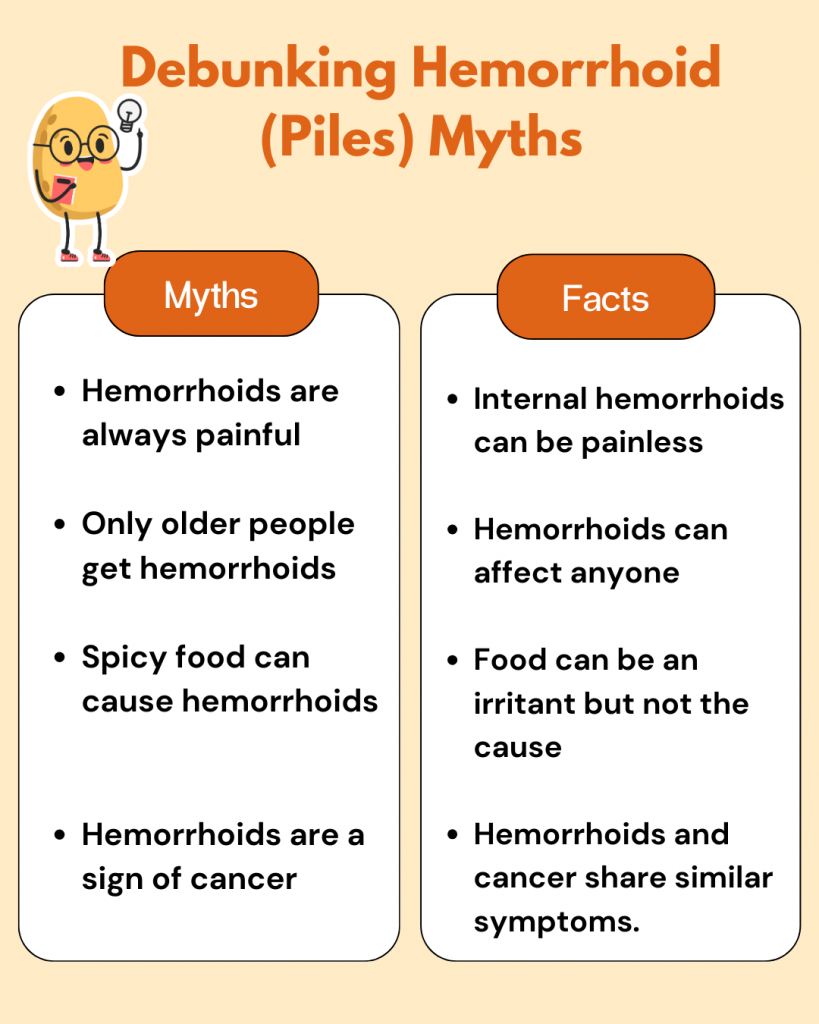Hemorrhoids and piles are simply two names for the same condition: swollen veins in the anus and rectum. Many people use these words interchangeably, and perhaps with a touch of embarrassment assuming they’re two different ailments.
While the topic might be a little uncomfortable to discuss, it’s incredibly common. Millions of people experience hemorrhoids at some point in their lives. Understanding hemorrhoids or piles and treatment options is the first step to finding relief and improving your quality of life.
USA Hemorrhoid Centers is an expert in non-surgical hemorrhoid treatment. If you are concerned about pain and discomfort that could be associated with hemorrhoids, consult a hemorrhoid specialist for an evaluation.
Schedule A Hemorrhoid Consultation
What are Hemorrhoids?
Hemorrhoids are swollen veins in the anus and rectum. While these veins are a normal part of our anatomy, they become problematic when inflamed or enlarged. Think of them like varicose veins, but instead of in your legs, they’re in your lower digestive tract.
Types of Hemorrhoids (Piles)
Hemorrhoids can be divided into two categories, internal and external, but in some cases, they can also develop together, known as mixed hemorrhoids.
Internal hemorrhoids occur inside the rectum, often causing painless bleeding, and are graded from 1-4 based on their location and severity. Internal prolapsed hemorrhoids, which can be felt and sometimes seen externally, appear as soft lumps of tissue protruding from the anus.
External hemorrhoids develop under the skin around the anus, typically causing pain, itching, and swelling; a thrombosed external hemorrhoid occurs when a blood clot forms within it.
Mixed hemorrhoids are both internal and external hemorrhoids occurring at the same time, producing a combination of symptoms.
Difference Between Hemorrhoids and Piles
“Piles” is just another term used for hemorrhoids in different parts of the world, like the United Kingdom and India, while in the United States, the word “hemorrhoids” is more prevalent.
The confusion arises because people often use “piles” or “hemorrhoids” to describe the symptoms of enlarged or problematic hemorrhoids rather than the anatomical structures themselves.
Causes of Hemorrhoids (Piles): Why Do They Develop?
Risk Factors Leading to Hemorrhoids (Piles)
Several factors can contribute to the discomfort and inflammation of hemorrhoids (or piles).
Straining or putting pressure during bowel movements, usually a consequence of chronic constipation or diarrhea, exerts considerable force on the delicate veins lining the rectum and anus, resulting in swelling and pain.
Pregnant women are also prone to experiencing increased pressure in the rectal area, a result of hormonal fluctuations that slow digestion and the added weight of the developing uterus.
Excess weight, particularly from obesity, increases pressure on the rectal veins, exacerbating existing hemorrhoids. Prolonged sitting also hinders proper blood circulation, potentially worsening pre-existing hemorrhoid issues. Additionally, aging weakens the supportive veins in the rectal area, making them more susceptible to swelling. Finally, a genetic predisposition can play a role, meaning some individuals inherit a higher risk of developing hemorrhoids.
Hemorrhoids (Piles) Symptoms: What to Look For

Hemorrhoids (Piles) Prevention: Reducing Your Risk
Since hemorrhoids or piles are swollen veins near the rectum and anus, they can cause pain, discomfort, and bleeding. While some people are more likely to get them, many cases are linked to how you go about your everyday life. You can lower your risk by eating a good diet and having healthy bathroom habits, which helps keep blood flowing properly and reduces pressure.
To prevent hemorrhoids from developing or worsening, consider the following lifestyle suggestions:
- Eat a high-fiber diet (fruits, vegetables, whole grains).
- Drink plenty of fluids (to keep stools soft).
- Avoid straining during bowel movements.
- Maintain a healthy weight.
- Exercise regularly (to improve circulation).
- Avoid prolonged sitting, especially on the toilet.

Living with Hemorrhoids (Piles): Tips for Comfort
While hemorrhoids can be a persistent problem, there are ways to manage the discomfort and improve your quality of life. Below are some everyday tips and techniques to deal with hemorrhoid pain, improve your well-being, and easily navigate daily routines.
- Use soft, unscented toilet paper.
- Avoid prolonged sitting.
- Use a cushion for sitting if necessary.
- Practice good hygiene (gentle cleaning after bowel movements).
When to See a Doctor:
While many hemorrhoid issues in the early stages may resolve on their own with home care, it’s important to see a hemorrhoid specialist if you experience severe symptoms such as significant rectal bleeding, particularly if it’s accompanied by dizziness or lightheadedness.
Persistent pain that doesn’t respond to over-the-counter treatments is another reason to consult a physician. Changes in your bowel habits, such as alterations in stool consistency or an increase in the frequency of bowel movements, should also be evaluated. Finally, the presence of blood in your stool, even if it seems minimal, requires prompt medical attention as it could be a sign of a more serious underlying condition.
If any of the above symptoms are something you can relate to and are causing discomfort, schedule a consultation with one of our specialists at USA Hemorrhoid Centers to check for hemorrhoids.
Connect With Our Hemorrhoids Specialists
Hemorrhoids (Piles) Treatment: Finding Relief
Treatment for hemorrhoids depends on the grade level of hemorrhoids, location, size, and severity of the symptoms. The following methods can be tried to alleviate painful symptoms and become pain-free:
- Lifestyle changes: Simple adjustments such as increasing fiber intake, drinking plenty of fluids, and avoiding activities that involve straining, such as heavy lifting or prolonged toilet sitting, can be beneficial.
- Over-the-counter medications: Creams, pain relievers, ointments, and suppositories can temporarily relieve symptoms.
- Sitz baths: Soaking the anal area in warm water can soothe swollen tissue.
- Medical procedures: Options include hemorrhoid artery embolization (HAE), sclerotherapy, rubber band ligation, or surgery in more severe cases.
Hemorrhoid Artery Embolization (HAE)
What is HAE?
Hemorrhoid artery embolization (HAE) is a minimally invasive approach to treating hemorrhoids by reducing their blood supply. This reduction in blood flow causes the hemorrhoids to shrink, providing significant relief from symptoms like pain and bleeding.
The HAE Procedure: How It Works
- Access and Imaging: A catheter is inserted into the wrist or groin to access the blood vessels after numbing. Real-time X-ray imaging (fluoroscopy) is used to guide the procedure.
- Locating the Target: The interventional radiologist carefully locates the arteries feeding blood to the hemorrhoids.
- Blocking Blood Flow: Tiny particles or coils are inserted into these arteries, effectively blocking the blood supply and causing the hemorrhoids to shrink.
Why Choose Hemorrhoid Artery Embolization?
With its multiple benefits, hemorrhoid artery embolization (HAE) offers a compelling alternative to traditional hemorrhoid treatments. Being minimally invasive, HAE requires no large incisions, resulting in less scarring and a quicker recovery.
The procedure is typically performed at an outpatient clinic, allowing most patients to return home the same day. Compared to more invasive methods like surgery or banding, HAE is less painful. Recovery is also swift, with many individuals able to resume their normal routines within just a few days.
HAE proves particularly effective for complex cases, offering a viable solution for those experiencing persistent bleeding or dealing with large hemorrhoids that haven’t responded to other treatment options.
USA Hemorrhoid Centers: Expert Care for Hemorrhoids
For patients seeking a less invasive way to deal with persistent internal hemorrhoids, hemorrhoid artery embolization (HAE) offers a promising alternative. Interventional radiologists at USA Hemorrhoid Centers use this leading-edge technique to provide significant pain relief, particularly to those suffering from chronic or severe hemorrhoid symptoms who want to avoid surgery. If other treatments have been ineffective, consulting with an interventional radiologist about HAE might be the first step to long-term comfort and a better quality of life.
Interested in learning more about HAE or scheduling a consultation? Contact USA Hemorrhoid Centers at 855-805-4247 or visit www.usahemorrhoidcenters.com to explore your options and find a location near you.









